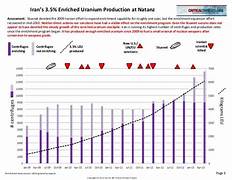On December 3, 2007, the United States released a pivotal National Intelligence Estimate (NIE) that sent shockwaves through the international community. The report focused on Iran's nuclear ambitions and contradicted previous assessments, challenging the narrative that Iran was actively pursuing nuclear weapons at that time. This document, a product of collaboration among various U.S. intelligence agencies, provided a nuanced perspective on Iran's nuclear program, influencing diplomatic efforts and shaping the discourse surrounding Iran's role in the global arena. The NIE on Iranian development of nuclear weapons was a comprehensive analysis that departed from the more alarmist tone of its predecessor in 2005, which suggested that Iran was on an unambiguous path toward acquiring nuclear weapons. The 2007 report concluded with "high confidence" that Iran had halted its nuclear weapons program in the fall of 2003. The intelligence community further assessed with "moderate confidence" that, as of mid-2007, Iran had not resumed its nuclear weapons program. This reassessment had significant ramifications, altering the geopolitical landscape and influencing the international community's perception of Iran's nuclear activities. It also had a direct impact on diplomatic efforts, challenging the narrative that military intervention might be necessary to curb Iran's alleged nuclear ambitions. The report contributed to a shift in emphasis from confrontation to diplomatic engagement as a means of addressing the Iranian nuclear issue. The NIE's findings were met with a mixture of relief, skepticism, and scrutiny. Some welcomed the intelligence community's more measured assessment, seeing it as an opportunity for renewed diplomatic initiatives. Others, however, questioned the sudden change in perspective and raised concerns about the reliability of intelligence assessments. The 2007 NIE highlighted the complexity of intelligence gathering and analysis, emphasizing the need for continuous reevaluation of assessments based on the latest available information. It showcased the intelligence community's commitment to providing accurate and objective analysis, even if it meant challenging preconceived notions or diverging from previous assessments. In the aftermath of the report's release, diplomatic efforts gained momentum. The international community, including the United States and its European allies, sought to engage with Iran diplomatically to address concerns about its nuclear program. This shift in approach laid the groundwork for future negotiations, including the P5+1 talks (China, France, Germany, Russia, the United Kingdom, and the United States) with Iran on its nuclear program. While the 2007 NIE did not definitively resolve the long-standing issue of Iran's nuclear activities, it played a crucial role in shaping the diplomatic landscape and fostering a more nuanced understanding of Iran's intentions. The intelligence community's willingness to reassess and communicate its findings transparently underscored the importance of accurate and informed intelligence analysis in navigating complex geopolitical challenges. The events surrounding the release of the NIE on Iranian development of nuclear weapons in December 2007 serve as a reminder of the dynamic nature of international relations and the pivotal role of intelligence assessments in shaping policy decisions.
3 December 2007 U.S.A. – – National Intelligence Estimate on Iranian Development of Nuclear Weapons Published
